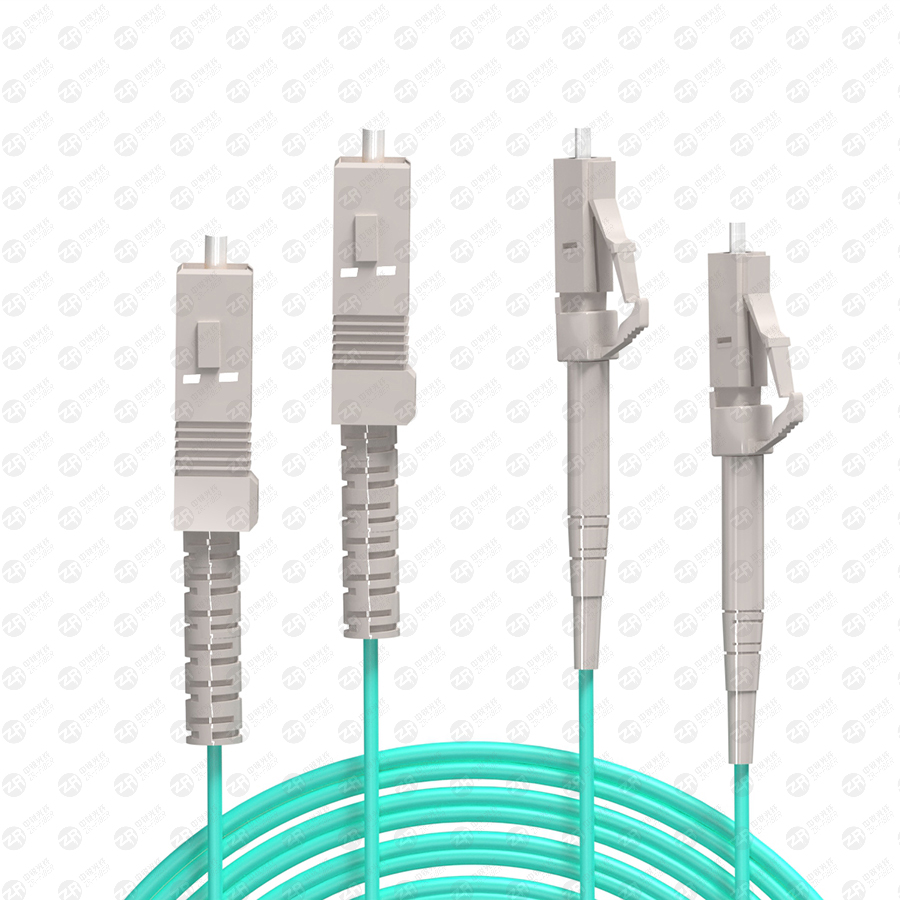Technology is constantly developing, so many new things are constantly appearing. From the broadband that everyone used before to the current fiber, the network speed is constantly improving. Let me introduce to you what fiber jumpers are, the types of fiber jumpers, and the structure of fiber jumpers.
What is a fiber patch cord
Fiber patch cords are used to make patch cords from equipment to fiber optic cabling links. With a thicker protective layer, it is generally used in the connection between the optical transceiver and the terminal box, and is used in some fields such as optical fiber communication systems, optical fiber access networks, optical fiber data transmission, and local area networks.
Types of Fiber Patch Cords
Optical fiber jumpers (also known as optical fiber connectors), that is, optical fiber connectors connected to optical modules, also have many kinds, and they cannot be used with each other. The SFP module is connected to the LC fiber optic connector, while the GBIC is connected to the SC fiber optic connector. The following is a detailed description of several commonly used optical fiber connectors in network engineering:
①FC type optical fiber jumper: The external strengthening method is a metal sleeve, and the fastening method is a turnbuckle. Generally used on the ODF side (the most used on the patch panel)
②SC type optical fiber jumper: the connector connecting the GBIC optical module, its shell is rectangular, and the fastening method is the plug-and-pull type, which does not need to be rotated. (Most used on routers and switches)

③ST-type optical fiber jumper: commonly used in optical fiber distribution frame, the outer shell is round, and the fastening method is turnbuckle. (For 10Base-F connections, the connectors are usually ST type. Often used in fiber optic distribution frames)
④LC-type fiber jumper: a connector for connecting SFP modules, it is made with a modular jack (RJ) latch mechanism that is easy to operate. (commonly used by routers)
The structure of fiber jumper
Optical fiber jumpers (also known as optical fiber connectors) refer to the connector plugs installed on both ends of the optical cable to realize the active connection of the optical path; the plugs on one end are called pigtails. Optical Fiber Patch Cord/Cable is similar to coaxial cable, except that there is no mesh shield. At the center is the glass core where light travels. In a multimode fiber, the diameter of the core is 50 μm to 65 μm, which is roughly the thickness of a human hair. The diameter of the single-mode fiber core is 8 μm~10 μm. The core is surrounded by a glass envelope with a lower refractive index than the core to keep the fiber within the core. On the outside is a thin plastic jacket that protects the envelope.
The fiber optic terminal box is an auxiliary facility used in the communication industry to accommodate pigtails and protect their connectors. I don’t know if you have noticed that optical cables are often used for network wiring outdoors, while twisted pairs are used indoors, and the two cannot be directly connected. Branch and continue into indoor wiring.
That is to say, the optical fiber terminal box is equivalent to a connector, which plays the role of connecting the optical cable and the pigtail. First, connect the end of the optical cable to the terminal box and connect it with the optical jumper. After passing through the switch, the entire optical cable is split into a single optical fiber, which is completed between the optical fiber and the optical fiber and between the optical fiber and the pigtail respectively. welding. After the optical fiber terminal box is successfully installed, not only the optical fibers and pigtails can be protected and connected, but also the interference of the environment on data transmission can be reduced as much as possible, so that it has higher data transmission efficiency.
So how should the optical fiber terminal box be installed and used? First of all, the optical fiber terminal box is generally used indoors. If it is used outdoors, some protective measures should be taken to prevent wind, rain and exposure to shorten the service life of the terminal box. Second, the optical fiber terminal box is suitable for working at a temperature of minus twenty-five degrees Celsius to forty degrees Celsius. If it exceeds this range, the working state of the terminal box may be affected.
Secondly, the service life of each system is generally about 20 years. In order to ensure its service life, the environment where the terminal box is stored has certain requirements in terms of temperature, humidity, air pressure, etc. Between 55 degrees Celsius, the air pressure is maintained between 70 and 106 kilopascals, and the moderation should be controlled below 85%.
In terms of installation, attention should be paid to the installation position of the fiber optic terminal box during installation, and an appropriate installation method should be selected. Generally speaking, the installation position of the terminal box should be 0.3 meters above the ground (or raised floor) to leave enough space to install the bottom box, adapter, external socket power supply and other components.
When fixing the terminal box, different tools and methods such as expansion screws and shooting nails can be used according to the specific conditions of the construction site. If the device needs to be installed on the ground, pay attention to the waterproof and dustproof function of the junction box, and strengthen its anti-compression and anti-vibration capabilities.